You likely spent time picking out the perfect color or color combination for your betta fish. So, it can be alarming if you notice their formerly brilliant color suddenly fading and turning to shades of orange.
The culprit is likely velvet disease caused by a parasite.
Unfortunately, the color change is the least concerning part of velvet disease for your fish. It’s a potentially deadly condition, and fast action is crucial to increasing the chances of your betta’s survival.
We’ve dealt with our fair share of velvet disease in betta fish. So, we’ll share what we’ve learned and support you with hopefully getting rid of the parasite for good so that your betta can go back to enjoying its life.
Contents
What Is Velvet Disease?
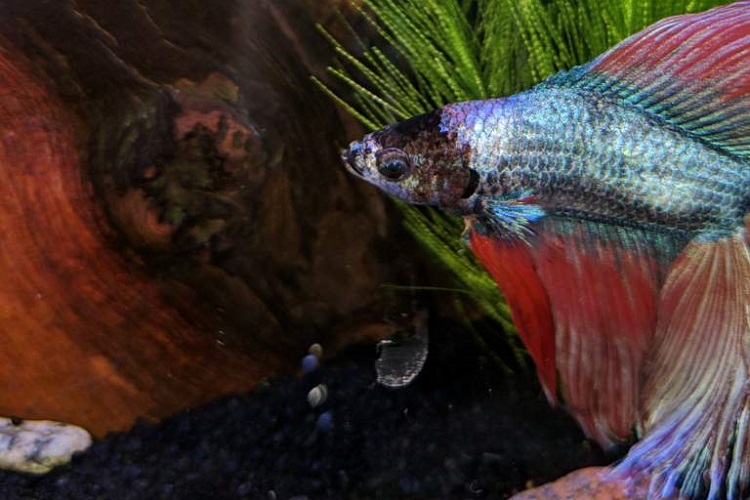
Velvet disease is a potentially deadly parasite infection that affects betta fish. It goes by several names, including:
- Coral disease
- Gold dust disease
- Rust disease
The specific parasite that causes velvet disease varies, but they all originate from the Piscinoodinium family. These ectoparasitic dinoflagellates chew through a betta fish’s skin and gills.
The result is an orange or rust color where the parasites enter your fish’s body, resulting from the Piscinoodinium’s chlorophyll content.
Because Piscinoodinium is a dinoflagellate with protozoan and chlorophyll properties, some people classify it as a parasite while others view it as algae. But given that we’re talking about how velvet disease impacts betta fish, we’ll be referring to it as a parasite.
Life Cycle of the Velvet Disease Parasite
Since Oödinium is the most common species that causes velvet disease in betta fish, it’s important to understand its lifecycle. Doing so will give you a better understanding of why it’s necessary to follow the treatment process we’ll describe shortly.
Stage 1: Tomont

The Tomont stage is a reproduction period when individual Oödinium parasites reproduce in the substrate or decor of your betta’s tank. Any given Oödinium can divide into up to over 250 new Oödiniums.
Stage 2: Juvenile
The baby Oödinium leaves the safety of substrate or your betta’s decorations and swims around in the water column, seeking their fish host. They’ll then latch onto your betta fish when they land on their scales.
During this time, it’s easiest to treat your betta fish for velvet disease. The Oödinium are most susceptible during this time as they’ll die if they don’t find a host in under three days.
Step 3: Adolescent
Growing adolescent parasites begin eating through your betta’s slime coat, which is vital to your betta’s health. The parasite will eat away at your betta’s cells, which is when you’ll notice their color change to orange or rust.
Velvet Disease Causes
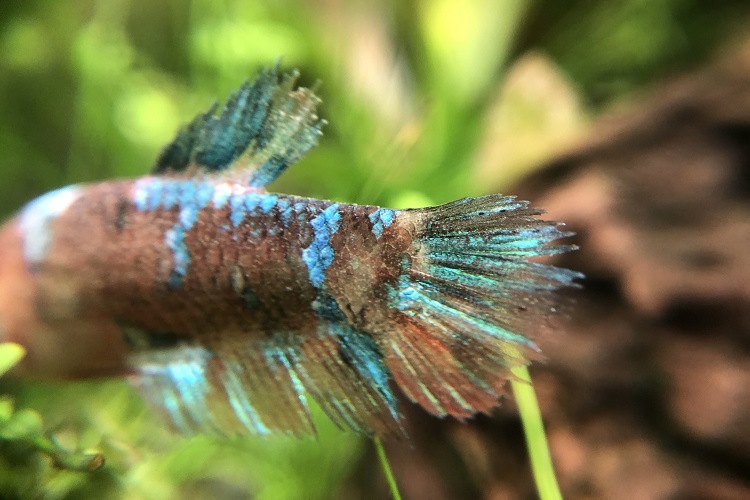
The primary cause of velvet disease in betta fish is unknowingly introducing an infected object or living species into their tank.
Many items can carry velvet disease, including:
- Fish
- Snails
- Shrimp
- Plants
- Filters
- Decorations
The bottom line is that if you place anything in your betta’s tank that’s living or an inanimate object that formerly lived in another fish tank, there’s the possibility of it contaminating your betta’s tank with velvet disease.
Of course, if you recently brought home a betta fish and noticed that they’re suddenly turning orange, they probably picked up the disease from the pet store.
Velvet Disease Symptoms
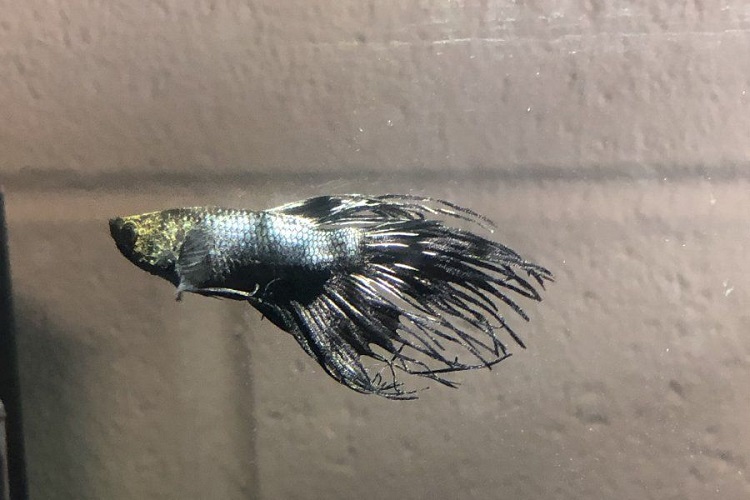
One of the first signs of velvet disease is your betta fish will lose some of its original colors and develop an orange or rust film. Since male betta fish have a single and brighter color than females, it’s typically easier to spot velvet disease in an earlier stage.
That said, regardless of your betta’s gender, if they have a lot of orange colors, it can be harder to spot velvet disease.
Nevertheless, other signs of velvet disease include:
- Yellow or orange spots
- Difficulty breathing
- Peeling scales
- Clamped fins
The symptoms of velvet disease progress the longer the problem goes without treatment. So, while color change is typically the first sign, clamped fins followed by difficulty breathing are the next stages.
If your betta fish has a progressive form of velvet disease, their scales will start to peel, looking like a sheet of peeling skin. At that point, it’s unlikely that treatment will work for your betta.
Other symptoms you might notice in a betta fish with velvet disease include loss of appetite, scratching their bodies against decorations or gravel, and being less active (minus the scratching).
Velvet Disease Treatment

Velvet disease is often trickier to spot and treat early than another common betta parasite known as Ich because the color change isn’t evident in all fish.
However, once you spot velvet disease, it’s crucial to act fast; Oödinium is a deadly parasite. Below are the steps we recommend you take to help your betta overcome velvet disease.
Step 1: Isolate Your Betta
If your betta lives in a tank with other fish, moving them into a quarantine tank is essential. You must also quarantine any other fish showing signs of velvet disease. There’s no need to move your betta out of its tank if it lives alone.
Step 2: Turn up the Temperature
The parasite that causes velvet disease doesn’t do well in warm water. Therefore, although you typically don’t want to keep your betta’s water temperature above 82 degrees Fahrenheit, it’s okay to turn it up to 85 degrees temporarily.
The trick is to do this slowly; if the water was formerly in the upper 70s, hiking the temperature up to 85 degrees will stress your betta.
Step 3: Keep the Tank in the Dark
Since the velvet disease parasite requires light to undergo photosynthesis, keeping your betta’s tank in a dark place will starve them.
That said, this only works for the parasites in the free-swimming phase. Once they enter your betta’s body, they’ll feed off your fish’s cells.
Step 4: Check the Water Parameters
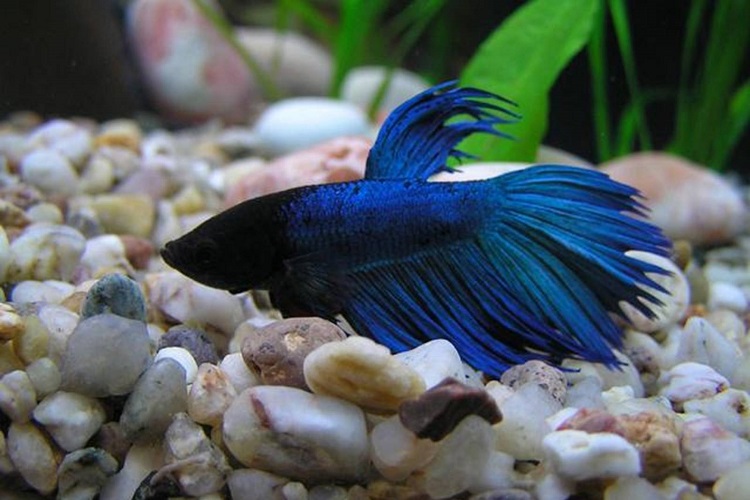
A stressed betta fish from poor water parameters isn’t going to recover as well as one living in optimal tank conditions. So, whether you keep your betta in their original or quarantine tank, ensure the water meets the following requirements:
- pH: 6.5 – 7.5
- Ammonia: 0 ppm
- Nitrite: 0 ppm
- Nitrate: Less than 20 ppm
Overfeeding bettas is one of the most common reasons for higher ammonia, nitrite, and nitrate levels.
Step 5: Use a Velvet Disease Treatment
Although you can help reduce the number of velvet disease parasites in your betta tank by following steps one through four, there’s nothing that can replace a hard-core medicinal treatment.
You can purchase velvet disease medicine in a pet store or online and follow the instructions for using it. In addition to medicating your betta’s water, adding some aquarium salt can help your fish heal from the physical injuries the parasite inflicted on them.
Step 6: Water Changes
Not only do you want to kill the velvet disease parasite, but it’s also important to flush it out of the water. Therefore, performing a 25% to 50% water change every day until the situation improves is an effective option.
Just ensure you read the instructions on the velvet disease medicine bottle, for you might need to add more mediation after each water change.
Velvet Disease Prevention
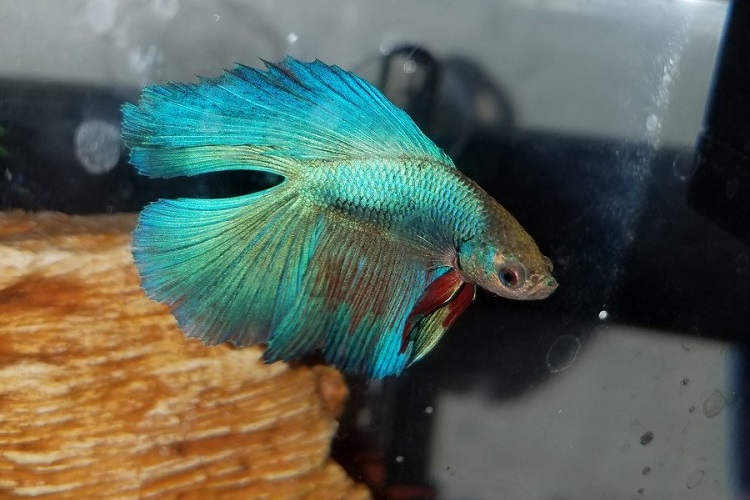
The best way to prevent velvet disease is not to add anything in your betta’s tank that came from another fish. So, new fish, live plants, and decorations you plucked out of a neighboring tank are all no-nos.
But we understand that you might want to give your betta a fish friend (as long as you provide them with enough space) or like the thought of providing them with fresh plants to hide in.
In that case, quarantine any new fish, plant, or object formerly in a fish tank for at least two weeks before adding them to your betta’s tank.
During that time, monitoring any fish you might be quarantining is crucial. If they show symptoms of velvet disease, you’ll be able to treat them before they meet your betta. Plants and decorations aren’t as pressing of a situation since the velvet disease parasite can’t live many days without a host, so it’ll soon die.
Other ways to prevent velvet disease include keeping a schedule of doing partial water changes, testing the water parameters frequently, and not overcrowding the tank.
The bottom line to keep in mind when you’re working on preventing another bout of velvet disease is that velvet disease parasites thrive in environments that are harmful to betta fish.
So, if you keep the water parameters in check and your betta fish in a happy, comfortable environment, there’s a lower chance of velvet disease striking.
Conclusion
Velvet disease is a serious condition affecting bettas, particularly fish already living under stress. Unfortunately, it’s not always easy to spot velvet disease at first.
For this reason, it’s essential to scrutinize your betta fish’s body for signs of an orange or rust color, especially if you recently introduced a new fish or object into the tank.
Although velvet disease can be deadly, it’s not an automatic death sentence. Instead, it’s up to you as the owner to act quickly to isolate your betta and help them recover with the support of medicating their water.

Ian Sterling, founder of Fishlab.com, began his aquarium journey over 30 years ago, driven by a deep fascination for fish and their diverse personalities. His website, Fishlab.com, is dedicated to making fishkeeping accessible and enjoyable, offering beginner-friendly guidance, expert insights, and a community for aquarists to connect and share experiences.


